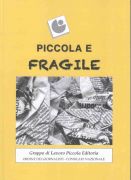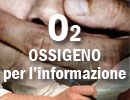Newsletter
Tieniti aggiornato sulle nostre ultime novità!
La Carta di Treviso all'ONU: un modello da imitare
15/12/2009
La Carta di Treviso, elaborata dai giornalisti italiani a difesa dei diritti del bambino, e' un modello da imitare e da adottare a livello internazionale perche' spesso ''i minori sono senza difese, anche nei confronti delle violenze verbali''. La proposta e' dell'ambasciatore italiano alle Nazioni Unite, Cesare Maria Ragaglini, intervenuto ad una conferenza al Palazzo di Vetro sul codice deontologico firmato nel 1990. ''La speranza - ha detto l'ambasciatore - e' di poter arrivare ad una carta internazionale che tuteli i diritti del fanciullo'' quando i giornalisti scrivono di fatti che riguardano i minori. La Carta di Treviso e' un codice di autoregolamentazione preparato dall'Ordine dei giornalisti italiani per proteggere i minori coinvolti in fatti di cronaca. Esso impone di mantenere l'assoluto anonimato di bambini e bambine che potrebbero essere danneggiati dalla notorieta' per atti di cui non sono responsabili. ''Si tratta di un contributo - ha detto Kiyotaka Akasaka, sottosegretario generale delle Nazioni Unite per la comunicazione e la pubblica informazione - che merita l'attenzione dei giornalisti e delle associazioni giornalistiche di tutto il mondo''. Il codice e' stato illustrato da Enrico Paissan, vicepresidente del Consiglio nazionale dell'Ordine dei giornalisti, e da Cosimo Bruno, coordinatore del gruppo di lavoro ''informazioni e minori'' nello stesso Consiglio. La Carta, secondo Bruno, ''resta uno dei piu' importanti documenti deontologici scritto dai giornalisti per i giornalisti''. Durante la conferenza, alcuni studenti del Master in giornalismo di Torino hanno presentato un filmato su Serena Cruz, una bambina di origine filippina che fu tolta dalla custodia dei genitori che l'avevano adottata illegalmente, finendo sulle prime pagine di tutti i giornali. La vicenda, che divise l'opinione pubblica e ispiro' un libro a Natalia Ginzburg, spinse ad adottare la Carta di autoregolamentazione per evitare di puntare i riflettori sui giovanissimi indifesi. La stessa Cruz, anni dopo, scoprì quel che era accaduto trovando alcuni giornali a casa della famiglia che l'aveva adottata. (ANSA).
Televideo.rai.it
La Carta di Treviso,codice deontologico di autoregolamentazione per la difesa dei diritti dei bambini è stato presentato all'Onu e proposto, dall'ambasciatore italiano alle Nazioni Unite Ragaglini, come modello da imitare a livello internazionale. Elaborata nel 1990 dai giornalisti italiani per proteggere i minori coinvolti in fatti di cronaca,la Carta di Treviso "merita l'attenzione dei giornalisti e delle associazioni giornalistiche di tutto il mondo" ha detto Akasaka, sottosegretario Onu alla Comunicazione.
Under-Secretary-General Akasaka welcomes the Italian journalists' association as it presents the charter of Treviso at the UN (December 9, 2009)
10/12/2009
[Ambassador Ragaglini]
Excellencies,
Representatives of the Italian Journalists’ Association,
Representatives of the United Nations Correspondents Association,
Ladies and Gentlemen,
Colleagues, I am very happy this morning, on behalf of the United Nations Department of Public Information, to welcome you to the United Nations. A very special welcome to the representatives of the Italian Journalists’ Association. It is fitting that you have come to the United Nations to draw attention to your “Carta di Treviso.” The “Carta di Treviso” draws its inspiration from the Convention on the Rights of the Child -- the most widely accepted international human rights treaty in the world. Just a few weeks ago, on the 20th of November, the United Nations commemorated the 20th anniversary of the Convention. And today, we mark Human Rights Day all over the world. For those of you who may not know, the “Carta di Treviso” of 1990, and its updated versions, is a code of ethics by - and for - journalists. Presently, it is binding on all Italian journalists. The intention of the “Carta di Treviso” is specific: it sets out the duty of journalists, in their reporting, to protect the rights of children and minors in the media. It aims to strike the delicate balance between the right to freedom of expression and the right to information, with the special duties and responsibilities that come with the exercising of these rights. As such, it is a contribution by Italian journalists that merits the consideration of journalists and journalists’ associations around the world. The issues that the “Carta di Treviso” seek to address are more acute today than when the charter was first drafted, back in 1990. The business of news, and who, and how, and the speed at which events are reported, has seen enormous changes owing to rapid advances in information and communication technologies. This has brought with it a need for new rules, new guidelines, and new ethics, including in the realm of cyberspace – where children are particularly vulnerable to such phenomenon as cyber hate and cyberbullying. At the same time, the violation of the rights of children and minors, whether in times of conflict, or in peace, continues. We know that an estimated 8.8 million children die before they reach their fifth birthday. Millions more lack protection against violence, abuse, exploitation, discrimination and neglect. The United Nations is working with Governments, educators, human rights organizations and many others, including media organizations, to protect children. Journalists play an enormous role in covering stories and raising awareness about how situations affect children differently than adults. This is an important part of their work. But, like the United Nations, I believe they can do even more. And here, I would like to encourage all journalists - and the media more broadly - to involve children in developing programmes with them, and in allocating specific broadcasting time for programmes designed by children themselves. It is one thing to report on children, it is another thing to hear the voices of children themselves. Ladies and Gentlemen, I would like, once again, to welcome the representatives of the Italian Journalists’ Association to the United Nations. I wish you every success in your future efforts. Thank you.
Riforma CNOG
una Legge vecchia di
22.716
giorni
22.716
giorni
QUADERNI CNOG
Lo scaffale

Ruben Razzante (a cura di)
Enrico Vanzina














